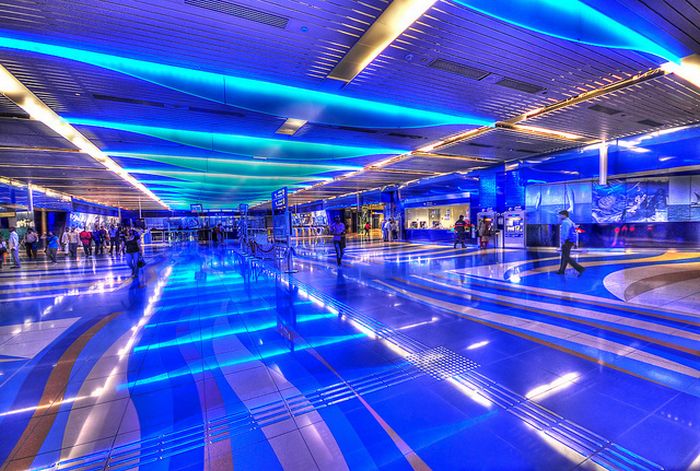|
|
Dubai, United Arab Emirates
|
Dubai came under the protection of the United Kingdom by the "Exclusive Agreement" of 1892, in which the UK agreed to protect Dubai against the Ottoman Empire. Two catastrophes struck the town during the 1800s. First, in 1841, a smallpox epidemic broke out in the Bur Dubai locality, forcing residents to relocate east to Deira. Then, in 1894, fire swept through Deira, burning down most homes. However, the town's geographical location continued to attract traders and merchants from around the region. The emir of Dubai was keen to attract foreign traders and lowered trade tax brackets, which lured traders away from Sharjah and Bandar Lengeh, which were the region's main trade hubs at the time.
Dubai's geographical proximity to Iran made it an important trade location. The town of Dubai was an important port of call for foreign tradesmen, chiefly those from Iran, many of whom eventually settled in the town. By the beginning of the 20th century, it was an important port. Dubai was known for its pearl exports until the 1930s; the pearl trade was damaged irreparably by World War I, and later on by the Great Depression in the 1930s. With the collapse of the pearling industry, Dubai fell into a deep depression and many residents starved or migrated to other parts of the Persian Gulf.
In the early days since its inception, Dubai was constantly at odds with Abu Dhabi. In 1947, a border dispute between Dubai and Abu Dhabi on the northern sector of their mutual border, escalated into war. Arbitration by the British and the creation of a buffer frontier running south eastwards from the coast at Ras Hasian resulted in a temporary cessation of hostilities. Electricity, telephone services, and an airport were established in Dubai in the 1950s, when the British moved their local administrative offices there from Sharjah. After years of exploration following large finds in neighbouring Abu Dhabi, oil was eventually discovered in Dubai in 1971, albeit in far smaller quantities, after which the town granted concessions to international oil companies. The discovery of oil led to a massive influx of foreign workers, mainly Indians and Pakistanis. Between 1968 and 1975 the city's population grew by over 300%.
On 2 December 1971 Dubai, together with Abu Dhabi and five other emirates, formed the United Arab Emirates after the former protector, Britain, left the Persian Gulf in 1971. In 1973, Dubai joined the other emirates to adopt a uniform currency: the UAE dirham. In the 1970s, Dubai continued to grow from revenues generated from oil and trade, even as the city saw an influx of immigrants fleeing the Lebanese civil war. Border disputes between the emirates continued even after the formation of the UAE; it was only in 1979 that a formal compromise was reached that ended hostilities. The Jebel Ali port was established in 1979. Jafza (Jebel Ali Free Zone) was built around the port in 1985 to provide foreign companies unrestricted import of labour and export capital.
|
|









